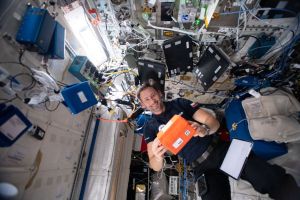The return journey of the Axiom-4 mission crew is underway. Today, 15 July, at approx. 11:30 a.m. Polish time in the Pacific, the capsule carrying Sławosz Uznański-Wiśniewski, the first Polish astronaut to visit the International Space Station, successfully landed. Along with him to the ISS flew... yeast, modified by the addition of a tardigrade gene, developed by scientists from the AMU Faculty of Biology as part of the Yeast TardigradeGene experiment.
The Yeast TardigradeGene experiment is conducted by a consortium of three universities: the University of Szczecin (project coordinator), Adam Mickiewicz University, Poznan, and the University of Silesia in Katowice. It is one of 13 experiments of the first Polish science and technology mission to an orbiting laboratory, Ignis.
The experiment aims to test the survival rate under space conditions of yeast genetically modified by the incorporation of a tardigrade gene into their genome. The gene is responsible for the synthesis of a mitochondrial protein called AOX and has been linked to the resistance of tardigrades to extreme environmental conditions. The results obtained will be essential in determining the feasibility of using such modified yeast as biofactories on Mars or the Moon or during space travel.
Astronaut Sławosz Uznański-Wiśniewski oversaw the Yeast TardigradeGene experiment throughout the mission. He was the one who placed the payload containing the yeast culture in the Columbus module ( pictured above is him during the payload transfer operation).
The project's next stage will be to conduct detailed studies and, in about two years, publish the results. Many variables will be considered, including cell viability and energy status resulting from mitochondrial function. Analogous studies will be performed for cells grown under terrestrial conditions.
